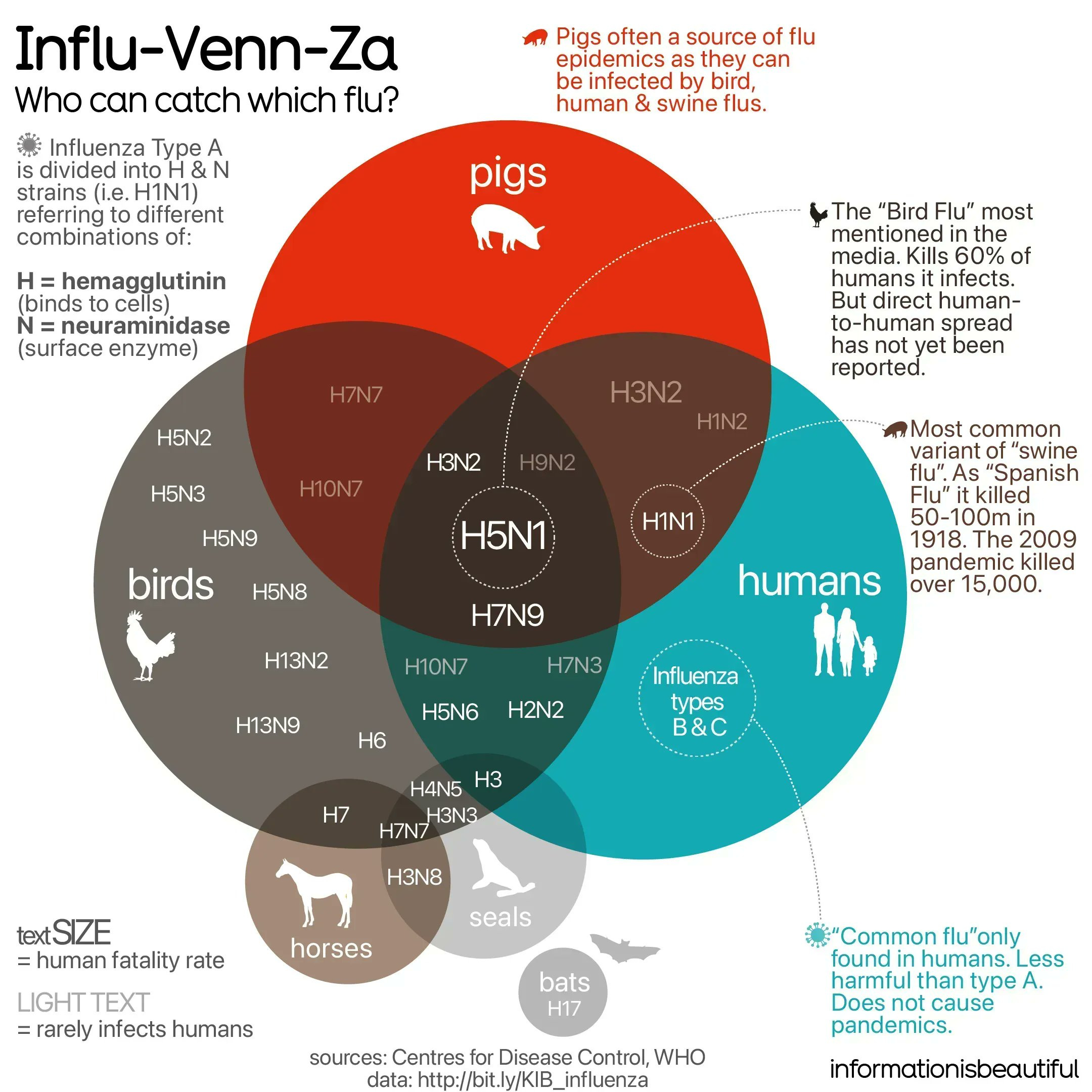Source: Information is Beautiful
Insights:
Influenza viruses commonly involve birds, particularly wild waterfowl, as their primary reservoir. Pigs are also important in influenza transmission due to their ability to host and facilitate genetic reassortment between human and avian influenza strains. In addition to birds and pigs, humans and various other mammals can become infected with influenza viruses, underscoring the virus's adaptability and potential for spillover into different species.
Influenza Type A is highly diverse and can infect various hosts, often leading to pandemics. In contrast, Type B primarily infects humans and causes seasonal outbreaks, while Type C typically causes mild respiratory infections and is less common, not contributing to seasonal epidemics.
H5N1 is a highly pathogenic strain of avian influenza, commonly known as bird flu, that can infect birds and occasionally humans. It is a significant concern due to its potential to cause severe illness and has raised fears of a global pandemic. It kills 60% of the humans it infects.





